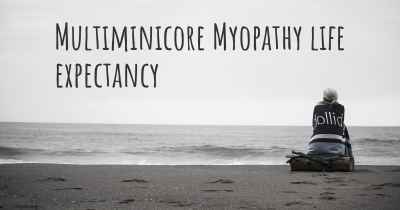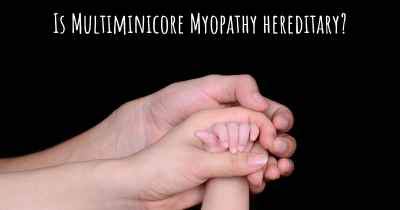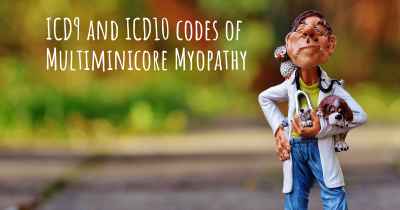Living with Multiminicore Myopathy. How to live with Multiminicore Myopathy?
Can you be happy living with Multiminicore Myopathy? What do you have to do to be happy with Multiminicore Myopathy? Living with Multiminicore Myopathy can be difficult, but you have to fight to try to be happy. Have a look at things that other people have done to be happy with Multiminicore Myopathy

Living with Multiminicore Myopathy
Multiminicore Myopathy (MmD) is a rare genetic muscle disorder that affects individuals of all ages. Living with MmD can present various challenges, but with the right support and strategies, individuals with this condition can lead fulfilling lives. It is important to remember that each person's experience with MmD is unique, and the severity of symptoms can vary greatly.
Medical Management
Medical management plays a crucial role in living with Multiminicore Myopathy. Regular visits to a specialized neuromuscular specialist are essential for monitoring the progression of the disease and managing symptoms. The medical team may include neurologists, physical therapists, occupational therapists, and respiratory therapists, among others.
Physical therapy is a cornerstone of managing MmD. A physical therapist can design a personalized exercise program to help maintain muscle strength, flexibility, and mobility. They can also provide guidance on using assistive devices such as braces, walkers, or wheelchairs, if necessary.
Respiratory care is another important aspect of living with MmD. Regular assessments of respiratory function and monitoring for respiratory complications are crucial. In some cases, individuals may require respiratory support, such as non-invasive ventilation or a tracheostomy, to assist with breathing.
Adapting Daily Activities
Living with MmD often requires adapting daily activities to accommodate physical limitations. It is important to listen to your body and pace yourself to avoid overexertion. Conserving energy is key, so planning activities in advance and prioritizing tasks can help manage fatigue.
Assistive devices can greatly enhance independence and quality of life. Depending on individual needs, using mobility aids like canes, crutches, or wheelchairs can help with mobility challenges. Additionally, adaptive equipment in the home, such as grab bars, shower chairs, or raised toilet seats, can improve safety and accessibility.
Modifying the environment can also make daily living easier. Removing tripping hazards, ensuring proper lighting, and arranging furniture for optimal accessibility can all contribute to a safer and more comfortable living space.
Emotional Support and Community
Living with a rare condition like MmD can be emotionally challenging. Seeking emotional support from family, friends, and support groups can provide a valuable outlet for sharing experiences, concerns, and coping strategies. Connecting with others who understand the unique challenges of living with MmD can be empowering and help combat feelings of isolation.
Education and advocacy are important for both individuals with MmD and their loved ones. Learning about the condition, staying informed about the latest research, and advocating for improved resources and support can make a significant difference in the quality of life for those living with MmD.
Self-Care and Well-being
Taking care of oneself is crucial when living with MmD. Prioritizing self-care activities such as getting enough rest, eating a balanced diet, and engaging in activities that bring joy and relaxation can help maintain overall well-being.
Maintaining a positive mindset can also be beneficial. Focusing on abilities rather than limitations, setting realistic goals, and celebrating small victories can contribute to a more positive outlook on life.
In conclusion, living with Multiminicore Myopathy presents unique challenges, but with proper medical management, adapting daily activities, seeking emotional support, and prioritizing self-care, individuals with MmD can lead fulfilling lives. Remember, each person's journey is different, and it is important to work closely with healthcare professionals to develop a personalized approach to managing the condition.








